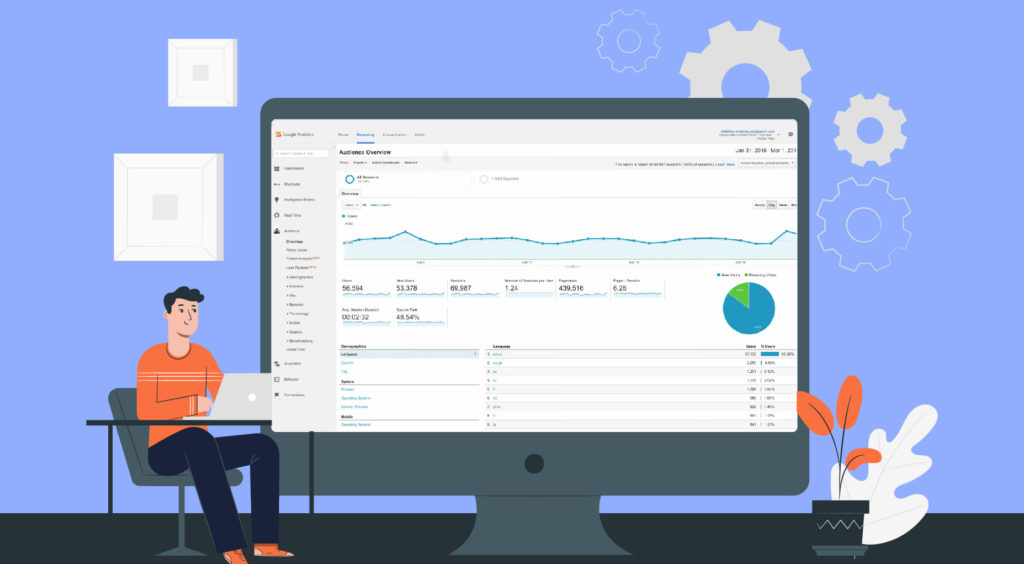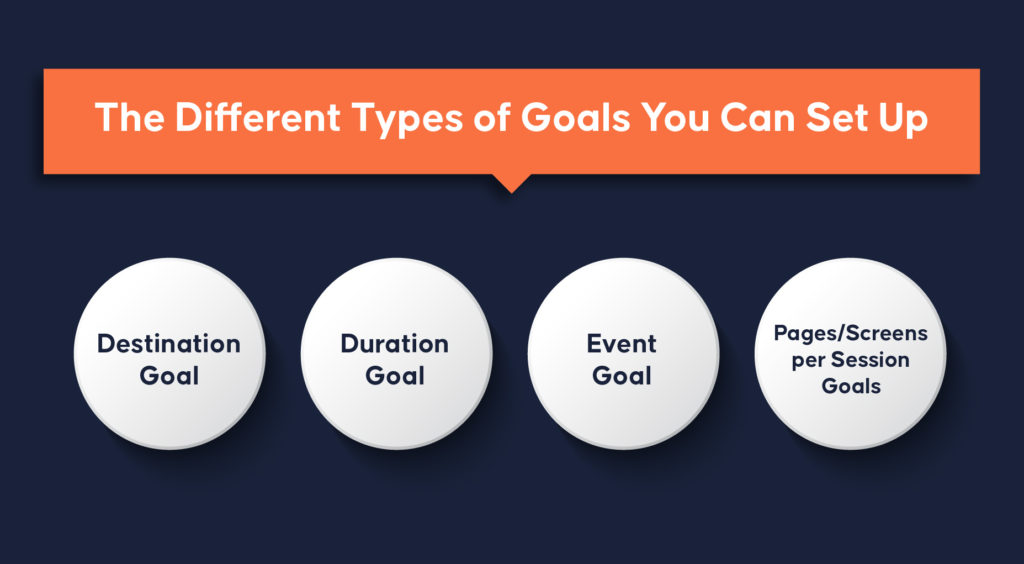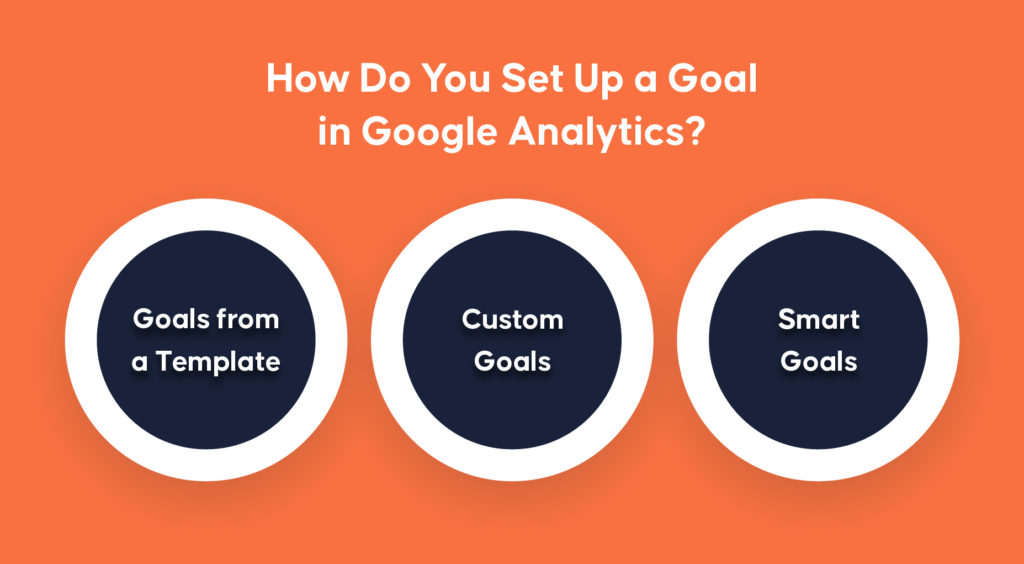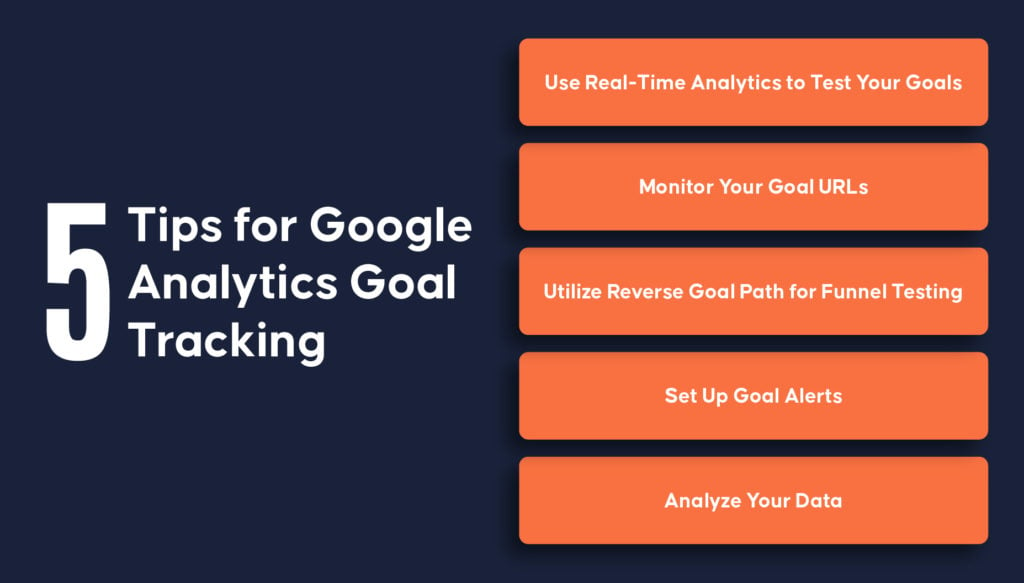Inquivix HQ
1-903, 18 Eonju-ro 146-gil,
Gangnam-gu, Seoul, Korea
06057

Are you using Google Analytics goals to measure the success of your marketing campaigns? If not, you’re missing out on a powerful tool that can help you scale your efforts. In this post, we’ll explain what goals are and show you how to create them in Google Analytics. We’ll also share some tips for using goals to track campaign performance. Let’s get started!
What Are Google Analytics Goals?
Goals in Google Analytics are the primary feature of a solid digital marketing measurement plan. If you don’t utilize goals in Google Analytics, you are throwing away a valuable resource. Google Analytics goals allow you to track specific user actions on your website. These actions, or conversions, are then used to measure the success of your online marketing efforts. There are four types of goals in Google Analytics, which we will discuss later in the article.
What Can You Learn from Google Analytics?
Google Analytics has many features that a digital marketer can use to analyze the performance of their website. The audience overview report from Google Analytics is what you see when you want to get a sense of how much traffic your site has received over time. The customer acquisition report will show you which advertising and marketing methods are the most effective for your business. The real-time behavior report will give you a snapshot of what users are currently doing on your website and when and where the highest activity is recorded.

All these reports will help a business to set up its digital marketing strategy with Google Analytics. Google Analytics goals are a valuable resource that allows you to track specific user actions on your site. These actions, or conversions, are then used to measure the success of your marketing campaigns.
The Different Types of Goals You Can Set Up
After that brief introduction to Google Analytics goals, let’s get into the different types of important Google Analytics goals you can set up. There are four basic types of goals: Destination, Duration, Event, Pages per Session.
Destination Goal
This goal type is used when a user arrives at a specific page on your website. This could be a thank-you page after they make a purchase, or it could be any other lead generation site. With Destination goals, you can set a certain page as a goal that will show as a conversion once a user reaches it.
Duration Goal
These goals track how much time a visitor spends on a page. This could be useful if you want to track how engaged a user is with your content. The goal will show as a conversion once the user visits the specified amount of time on the page.

Event Goal
The predefined actions that a user is expected to carry out on your site are event goals. If you expect the users to watch a video or download something after visiting the page, they can be called event goals. Event tracking metrics will help you understand how much the visitors engage with your page.
Goals: Pages or Screens per Session
Another approach to measuring engaged site visitors in Google Analytics is by setting a goal for pages or screens per session. Instead of measuring how long a person spends on your site, the number of pages viewed per session is tracked. This is a great way to track user engagement.
How Do You Set Up a Goal in Google Analytics?
Goals in Google Analytics are a powerful tool that you can use to measure the performance of your website. You can use goals to track how many people visit your website, how much traffic your website generates, and how engaged visitors are on your website.
The first step in setting up goals in Google Analytics is defining goals for your site. A site objective is an overall goal that you wish to achieve through a user’s visit to your site. This might be a transaction, lead generating submission, web chat session, or anything else. Once this is settled, you can set up Google Analytics Goals.
First, sign in to your Google Analytics account. After that, go to the admin page and choose a view. Once you go to the “View” column, select “Goals”. Next, select “New Goal” to create one or “Import from Gallery” to use an existing goal after editing its settings. There are three options for creating a goa: template, custom, or smart goals.

Goals from a Template
The purpose of goal templates is to assist you in creating tangible goals that are aligned with industry standards. You may modify any of the template fields before saving a goal. The goal categories are the more comprehensive business goals that drive the goal templates.
Custom Goals
The next option you have is to set up custom goals. Select the option “Custom” from the list and then select a goal type (we discussed these above). Then set your own criteria and finish setting up the goal.
Smart Goals
Not all accounts are eligible to set up Smart Goals. To create hyper-focused website sessions, Google’s artificial intelligence examines hundreds of signals from your websites’ activities to determine which are most likely to result in conversions. Smart Goals are generated based on each session’s score.
5 Tips for Google Analytics Goal Tracking
Now you know how to set up Google Analytics Goals. But, what about tracking goals?
Here are five tips on how you can track your Google Analytics goals.

Use Real-Time Analytics to Test Your Goals
Reviewing real-time data after completing a goal action on the site will show you if your objectives are executing as expected. Make sure to use Goal sequencing as well. This will help you track different conversion funnels on your website. It is also important to use Event Tracking for Goals. This will help you gather data on how people are interacting with your site content.
Monitor Your Goal URLs
The first step in determining whether your site is tracking only true goal URLs or inadvertently recording non-goal pageviews as goals is to check for this error. Goals should only be set for pages that result in the desired outcome, such as a purchase or sign-up. Incorrect goal URLs can distort your data and make it difficult to measure the effectiveness of your website’s goals. As you set up your goals, use the Google Analytics URL Builder to create tagged links for your objectives.
Utilize Reverse Goal Path for Funnel Testing
This component of Google Analytics is important for determining whether visitors are progressing down the correct funnel path for a specified goal. To access it, navigate to Conversions > Goals > Reverse Goal Path. From there, you can see the pages that visitors visited immediately before reaching the goal page. If you see discrepancies between the path visitors are taking and the path you intended them to take, you can make necessary adjustments to your funnel.
Set Up Goal Alerts
You can create goal alerts in Google Analytics. For example, you can monitor how much had the percentage changed for a certain goal. To do this, go to the Admin section of your Google Analytics account. In the View column, click on Custom Alerts. Then click +New Alert. From there, you can select when you want to be notified and what conditions should trigger an alert.
Analyze Your Data
This is the most crucial tip of all. You can set up goals, track them and monitor them. But if you fail to analyze them, you won’t be able to use the gathered data to help your business. Make sure to use the data to identify patterns and trends. Doing so will help you make better decisions about your marketing campaigns.
Conclusion
Google Analytics is a great tool for businesses of all sizes. With its ability to track website traffic, goal conversions, and eCommerce activity, it’s easy to see how valuable this tool can be for your business. Setting and tracking website goals is an important part of effective digital marketing. Luckily, Google Analytics makes this process easy by providing four different goal types to choose from. By monitoring your website’s performance through these goals, you can make updates to your campaigns as needed in order to continue achieving the results you desire.
